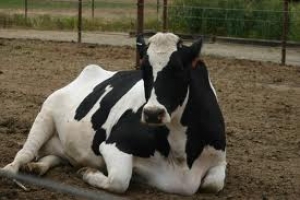The Solutions for dairy sector
Investment Provided Benefit To Dairy Farmers

The impact of innovation on the dairy industry over the past 30 years, conducted by Dairy Australia and the Victorian Department of Primary Industries, has revealed a total of $2 billion has been spent on pre-farmgate research, development and extension (RD and E) projects for Australia’s dairy farmers between 1980 and 2010.
The report found a direct connection between increased milk production per hectare and RD and E investment in pasture production and use, feed supplements and genetic improvement. Milk yield increased 192 per cent from an estimated 2,878 litres/ha in 1980 to 8,419 litres/ha in 2010.
Dairy Australia managing director Ian Halliday said the analysis by the Centre for International Economics proved the value and importance for ongoing investment into pre-farmgate RD and E for the whole industry.
“The evaluation backs up what we have been saying for some time now,” Mr Halliday said.
“It shows overall dairy industry production would have declined by an estimated 23 per cent due to rising costs and disused technology without industry driven improvements in pasture management and supplementary feeding systems over the past three decades."
“Farmers are producing more milk from less cows. But the industry is a vastly different landscape today compared to 1980 which means it has been imperative our farmers and industry adapt to the constantly changing environment and challenges. A key factor to this successful adaption has been continual investment in projects which farmers cannot do efficiently as individuals.”
A breakdown of the $2 billion investment shows the majority of funding was invested in pasture/forage improvement and utilisation ($643 million), animal breeding and reproduction ($374 million) and natural resource management ($302 million). The rest of the money was spread across cow welfare, business and human resources, feed use and nutrition, milking systems and RD and E capacity building.
The report says widespread adoption in the 1980s of rotational grazing from New Zealand has played a large part in the improvement in pasture management and productivity of Australia’s dairy industry. Extension programs playing a key role in this include Target 10, Project 30/30 and Feeding Pastures for Profit.
The past 30 years has also seen a marked increase in the use of feed supplements, which has also attributed to higher milk production. In 2010 a cow consumed 33 per cent more supplementary feed dry matter than a cow of 1980. Recent programmes which have played a role in this include feed.FIBRE.future and Grains2Milk.
“The combined increase in pastures and supplements supports cows that are also 34 per cent more efficient at converting feed to milk,” Mr Halliday said.
Genetic improvement and gains in herd performance have been credited to work by Australian Dairy Herd Improvement Scheme (ADHIS), the introduction of Australian Breeding Values and tools developed by the InCalf and Countdown programmes.
Mr Halliday said it had also been estimated about 15 per cent of total on-farm investment over the past 30 years was devoted to natural resource management (NRM) issues, mostly over the last two decades.
The major areas of NRM RD&E focus have included effluent management, soil nutrient management, irrigation and water use efficiency, salinity and investment in greenhouse gas reduction.
“We will now use the report findings and learnings from the past 30 years to help inform future investment in RD and E on-farm projects,” Mr Halliday said.
The report is available at www.dairyaustralia.com.au. It is one of the many examples of the dairy service levy at work. Farmers receive a benefit of $3 for every $1 invested by Dairy Australia on their behalf. For more information on this and other levy investments visit the Dairy Australia website.






















